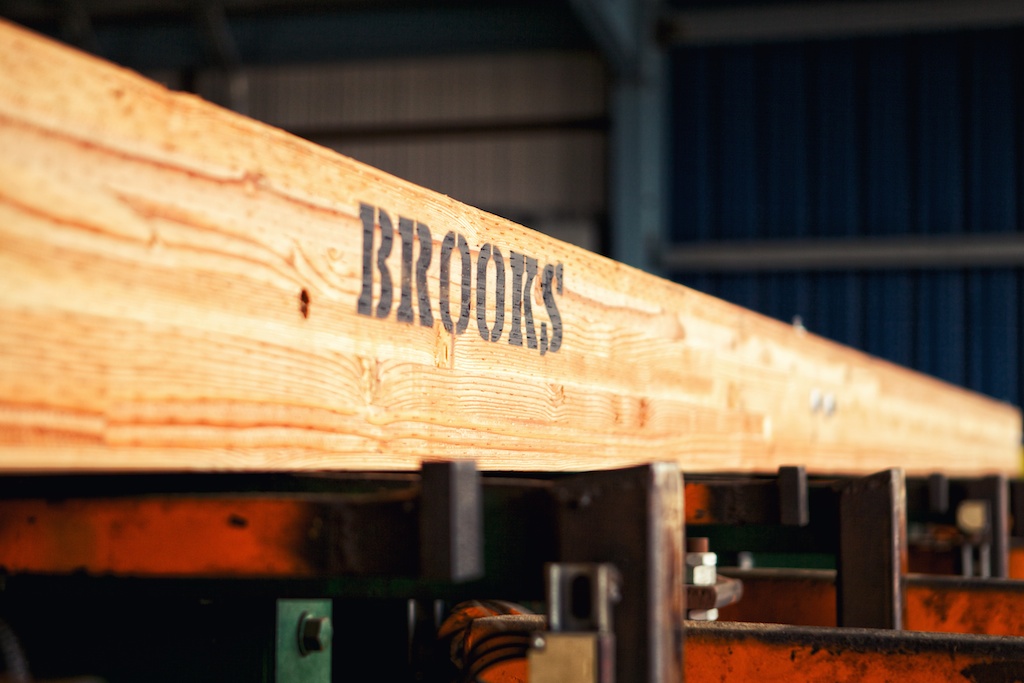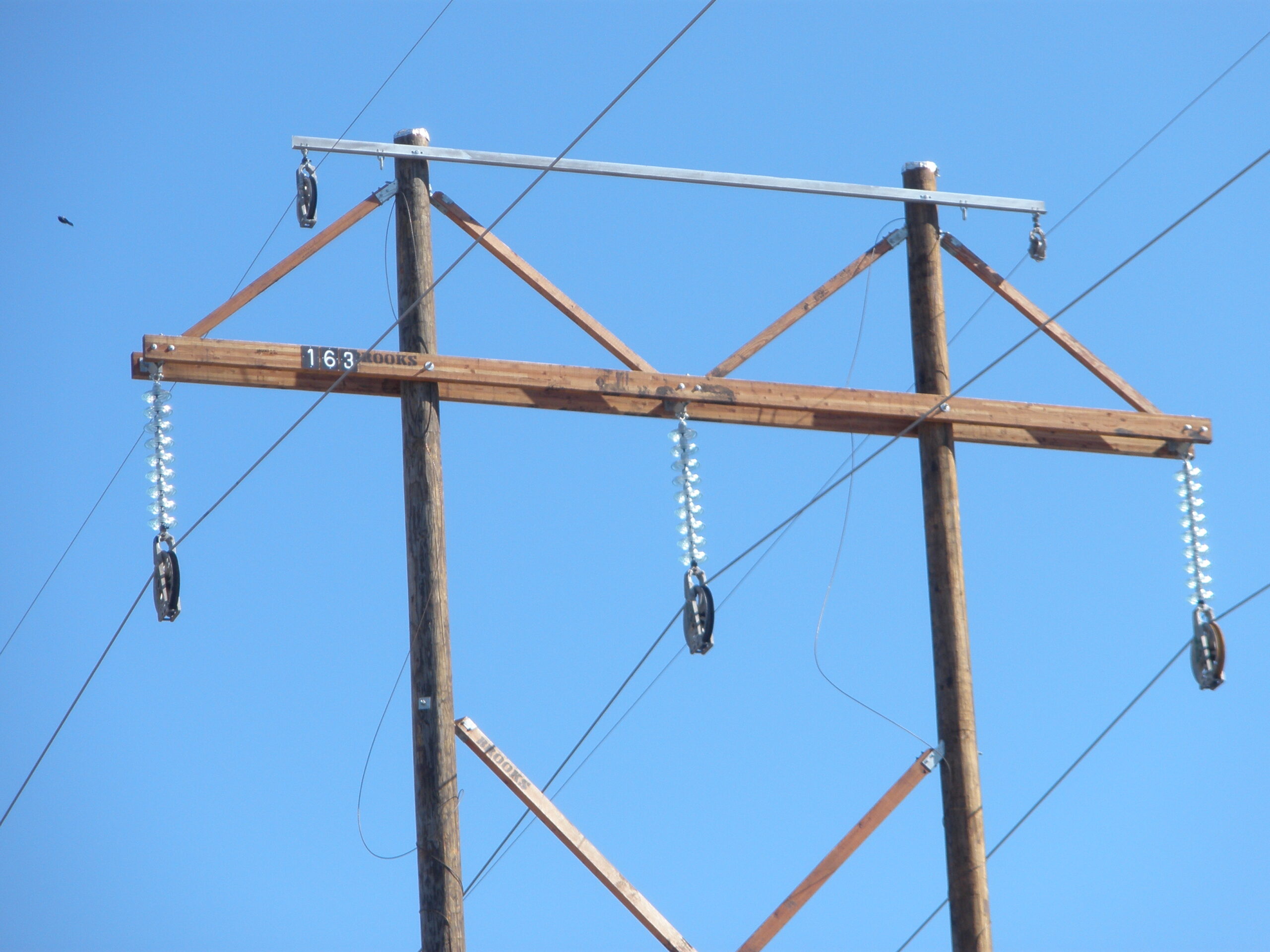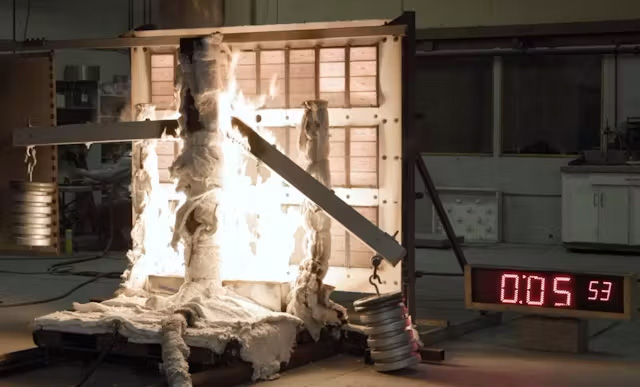
A true cradle-to-grave choice, wood offers superior sustainability marks
By the time a wood crossarm from Brooks Manufacturing has reached the end of its functional life, managed forests have already grown the timber needed for several more crossarms to replace it. Such is the sustainable cycle of wood crossarms, a closed-loop process that comes fully biodegradable, carbon capturing and sustainably focused.
Wood crossarms, the most sustainable choice in utility infrastructure, comes thanks to a true cradle-to-grave product in how it starts, is regrown, sequesters carbon and offers a biodegradable end-of-life option. The fully renewable nature of wood crossarms has a sustainable element woven into every step of the process.
At Brooks Manufacturing, the industry leader in wood crossarms, all the timber used in the product creation process is coastal Douglas fir derived from certified managed forests in the United States. These certified forests are cared for with oversight from federal, state and tribal authorities.
Each time a tree gets harvested for use as a wood crossarm, the forests are replanted, ensuring that during the 60-plus years of service life as a crossarm within the nation’s electric utility grid, new trees are grown in its place, typically four times as many trees as were harvested.
At Brooks Manufacturing Co. in Bellingham, Washington, wood crossarms remain a fully in-country manufacturing process, often keeping every element of the process local to the Pacific Northwest, from the harvesting and milling—Brooks partners with Forest Stewardship Council-certified sawmills—of the coastal Douglas fir right down to the creation of the crossarms.
Brooks Manufacturing has further reduced its carbon footprint through innovative plant process. Brooks continues to streamline its manufacturing process to reduce the movement of material with lift trucks and uses hydraulics in the production of sustainable wood crossarms that incorporates vegetable oil, eliminating the use of petroleum products. Shavings of the wood don’t go to waste, instead used as fuel for the plant’s wood-fired boiler to power the on-site dry kiln, which produces steam for the curing of the wood. In addition, stormwater runoff is collected at the plant in the rain-heavy Pacific Northwest, used in the additional creation of steam. The process allows for further reduction in the consumption of processed water from the local municipal water source.
Wood crossarms even cut down on carbon during the shipping process. The durability of a wood crossarm means they don’t require bulky packaging, such as used to protect the delicate composite crossarm options, allowing more crossarms per truckload, reducing both packaging waste and excess carbon expenditures during the shipping process.

The treated wood crossarms provide a carbon-neutral product, while the new tree growing in its stead continues to remove carbon from the air and replenish the environment with oxygen as part of the photosynthesis process. Coastal Douglas fir is a carbon reducer by nature, with nearly 50 percent of a tree’s weight coming from the carbon it has removed from the atmosphere. When harvested, that carbon is naturally sequestered into crossarms. A typical crossarm of 4 by 5 by 8 feet long contains just over 1 cubic foot of wood with 20 pounds of carbon per cubic foot, according to the North American Pole Council. As the juvenile trees planted to replace a harvested tree grow, they pull carbon from the air at a faster and more efficient rate as part of their natural growing process, creating a continuous cycle of removing and storing carbon.
The wood crossarms also have natural properties that protect them from sunlight and weather, meaning they don’t require harmful chemical applications reapplied over the lifetime of the crossarm. Composite crossarms do require the additional maintenance and chemicals. The biodegradable treatment applied to wood crossarms ensures it remains the top-rated crossarm product in terms of fire and wildfire ratings (outperforming composite crossarms during an independent testing in every category).
At the conclusion of the life after more than six decades, wood crossarms remain fully recyclable and able to decompose, unlike composite crossarms which contain harmful chemicals and plastics with little to no recycling availability that then last tens of thousands of years in landfills as “forever chemicals.”
Brooks Manufacturing pledges to continue to find additional methods to reduce its carbon footprint, making the most sustainable crossarm product in the country even more environmentally responsible, all while crafting the highest-quality products in the crossarm industry.




